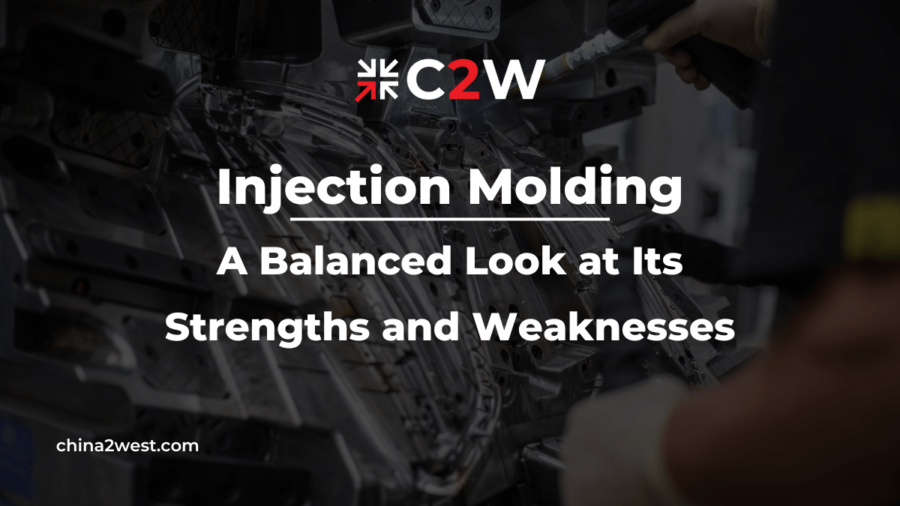Injection molding is a popular manufacturing process used across various industries to produce parts in large volumes. This method is particularly favored for its efficiency and ability to produce complex geometries with high precision. However, like any manufacturing technique, it comes with its set of challenges and limitations. In this blog post, we will explore the advantages and disadvantages of injection molding, helping manufacturers and designers make informed decisions.
The Essence of Injection Molding
At its core, injection molding is a transformative manufacturing process that serves industries far and wide by enabling the creation of detailed and uniform components. The process starts with heating a chosen material until it reaches a molten state. Following this, the liquid is propelled into a precisely crafted mold cavity under high pressure. Upon cooling, the material solidifies, perfectly embodying the intricate features of the mold. This cycle, characterized by its swift and precise nature, is central to injection molding’s appeal for mass production. The inherent adaptability of the technique allows for the use of various materials including, but not limited to, thermoplastics, thermosetting plastics, and certain types of metals and ceramics. This flexibility is instrumental in meeting the diverse material requirements across different sectors, ensuring that each part produced not only meets the dimensional tolerances but also adheres to specific material properties necessary for its intended application. Such capability to cater to a broad spectrum of design intricacies and material specifications underscores why injection molding is a cornerstone in the manufacturing landscape, propelling innovations in product development and design.
Advantages of Injection Molding
Injection molding stands out in the manufacturing world for its unparalleled efficiency in mass production. The automation level inherent in the injection molding process significantly reduces the need for manual labor, thereby enhancing production speed and volume. This is particularly beneficial for projects requiring large quantities of parts, as it ensures consistent output with remarkable uniformity across the board.
Moreover, the accuracy and detail achieved through injection molding are unmatched, enabling the creation of parts with intricate designs and complex shapes that other manufacturing methods may struggle to replicate. Such precision is vital across a myriad of sectors, including but not limited to automotive, aerospace, and healthcare, where the exactness of component specifications is non-negotiable. The capability to maintain strict tolerances and achieve high-quality finishes makes injection molding a preferred choice for producing high-precision components on a considerable scale. This blend of swift, high-volume production with meticulous attention to detail offers a competitive advantage, enabling industries to meet their manufacturing demands efficiently and effectively.
Versatility of Materials and Applications
One of the hallmark strengths of injection molding lies in its remarkable material flexibility. This process is uniquely compatible with a broad spectrum of materials, paving the way for manufacturers to select the ideal substrate according to the specific needs of their project. The list spans from various types of plastics—each with their own set of properties—to metals and ceramics, accommodating a wide array of durability, flexibility, and resistance requirements.
This compatibility is particularly advantageous, as it allows for precision tailoring of material characteristics to suit distinct applications. For instance, in the automotive sector, materials can be chosen for their high-temperature resistance or durability, essential for parts exposed to harsh operating conditions. Conversely, in the medical field, materials may be selected based on their biocompatibility or sterilization capabilities, crucial for patient safety and compliance with health regulations.
Moreover, this adaptability extends beyond material selection into the realm of industry applications. From everyday consumer electronics that demand robust yet lightweight components, to sophisticated aerospace parts requiring precision and strength, injection molding serves a vast and varied market. Its ability to mold materials into complex shapes and sizes with high repeatability makes it a versatile and indispensable tool in the manufacturing toolkit, capable of addressing the nuanced demands of different industries with unparalleled efficiency and specificity.
Challenges of Injection Molding
Injection molding reigns supreme for high-volume, precise plastic part production. But like any process, it has its Achilles’ heels. Here’s a breakdown of the key challenges:
Costly Startup
The biggest hurdle is the upfront investment. Each unique part requires a custom mold, and these can range from a few thousand to tens of thousands of dollars, depending on complexity. This makes injection molding less attractive for low-volume production runs.
Design Constraints
Injection molding has limitations on what shapes it can produce effectively. Sharp corners, undercuts (areas where material would be trapped within the mold), and very thin walls can cause problems with ejection, warping, or uneven material flow. Designing for manufacturability is crucial.
Long Lead Times
Mold creation isn’t an overnight process. It can take weeks or even months to design, machine, and test a mold before production begins. This can be a bottleneck for projects needing parts quickly.
Limited Material Selection
While there are many materials suitable for injection molding, some high-performance or exotic materials might not be compatible with the high temperatures and pressures involved.
Potential for Defects
Short shots (incomplete parts), sink marks (depressions), and weld lines (visible seams) can occur if the molding process isn’t optimized. Careful process control is needed to ensure consistent quality.
Injection Molding and Design Considerations
Design intricacies play a pivotal role in leveraging the full potential of injection molding. To navigate the complexities of this process, designers must strategically incorporate essential considerations such as optimizing draft angles, ensuring uniform wall thickness, and making informed choices regarding material properties. These elements are critical in not just facilitating the mold release and enhancing the structural integrity of the component but also in optimizing the flow of material during injection, which can significantly influence the aesthetic and functional quality of the final product. Moreover, integrating features like ribs and bosses, while mindful of their impact on cooling rates and sink marks, requires a balance between mechanical strength and material conservation. Effective collaboration between designers and mold engineers is crucial in this phase to refine part designs for manufacturability. This synergy aids in preempting potential issues, such as warping or stress concentrations, which could compromise part performance or necessitate costly modifications. By prioritizing these design considerations early in the project lifecycle, stakeholders can streamline the production process, minimize the need for revisions, and enhance the overall efficiency and outcome of the injection molding project.
Are you ready to explore how injection molding can benefit your business, or do you have further questions about the process? Our team of experts is here to help. Contact us today to discuss your manufacturing needs and find out how we can assist you in achieving your production goals.


